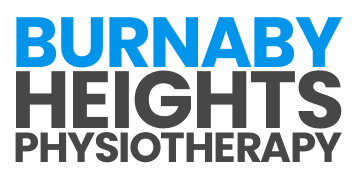
Unlocking Your Bodys Healing Potential: The Magic of Trigger Point Therapy Massage
July 18, 2024
Rejuvenate Your Senses: Exploring the Wonders of Swedish Massage Therapy
July 18, 2024Understanding Massage Therapy for Back Pain
Massage therapy is a powerful tool for alleviating back pain. It offers numerous benefits and works in various ways to help you find relief.
Benefits of Massage Therapy for Back Pain
Massage therapy provides several advantages for those suffering from back pain. These benefits include:
- Pain Reduction: Massage helps in easing muscle tension and reducing pain.
- Improved Circulation: It enhances blood flow, which aids in healing and reduces inflammation.
- Increased Flexibility: Regular sessions can improve your range of motion and flexibility.
- Stress Relief: Massage therapy helps lower stress levels, which can contribute to muscle relaxation and pain relief.
For more information on the overall advantages, visit our article on massage therapy benefits.
How Massage Therapy Helps Alleviate Back Pain
Massage therapy employs various techniques to target and alleviate back pain. Here are some ways it works:
- Muscle Relaxation: Massage helps to relax tight muscles, which can relieve pain and tension.
- Trigger Point Release: Techniques like trigger point therapy massage target specific areas that cause pain, providing relief.
- Enhanced Blood Flow: Improved circulation delivers more oxygen and nutrients to the affected areas, promoting faster healing.
- Reduction of Inflammation: Massage therapy can help reduce inflammation in the muscles and joints, which is often a source of pain.
These mechanisms make massage therapy a highly effective treatment for back pain. If you’re interested in different techniques, explore our article on types of massage therapy.
For those looking to combine treatments, consider reading about combining massage with other treatments.
By understanding how massage therapy works and its benefits, you can make informed decisions about incorporating it into your pain management routine.
Different Types of Massage Techniques
When dealing with back pain, it’s important to understand the various massage techniques available. Each technique offers unique benefits and can target different aspects of your discomfort. Here, we explore three popular types: Swedish Massage, Deep Tissue Massage, and Trigger Point Therapy.
Swedish Massage
Swedish massage is one of the most commonly practiced massage techniques. It involves long, flowing strokes, kneading, and circular movements on the topmost layers of muscles. This technique is ideal for overall relaxation and stress relief.
Benefits of Swedish Massage for Back Pain:
- Improves blood circulation
- Reduces muscle tension
- Promotes relaxation and stress relief
| Technique | Description | Benefits |
|---|---|---|
| Effleurage | Long, sweeping strokes | Improves blood flow |
| Petrissage | Kneading motions | Reduces muscle tension |
| Friction | Deep circular movements | Breaks up scar tissue |
| Tapotement | Rhythmic tapping | Stimulates nerve endings |
| Vibration | Shaking or trembling movements | Relaxes muscles |
For more detailed information, check out our article on Swedish massage therapy.
Deep Tissue Massage
Deep tissue massage focuses on the deeper layers of muscle and connective tissue. It is particularly beneficial for chronic aches and pain, as well as areas with tight muscles such as the lower back, shoulders, and neck.
Benefits of Deep Tissue Massage for Back Pain:
- Relieves chronic muscle tension
- Reduces inflammation
- Improves range of motion
| Technique | Description | Benefits |
|---|---|---|
| Stripping | Deep, gliding pressure along the length of the muscle fibers | Reduces muscle tension |
| Friction | Pressure applied across the grain of the muscle | Breaks down adhesions |
| Myofascial Release | Gentle stretching and elongated holds on the fascia | Improves flexibility |
| Trigger Point | Targeted pressure on specific tight spots | Releases muscle knots |
For more insights, visit our page on deep tissue massage therapy.
Trigger Point Therapy
Trigger point therapy targets specific tight areas within muscle tissue that cause pain in other parts of the body. These “trigger points” can be the root cause of many types of pain, including back pain.
Benefits of Trigger Point Therapy for Back Pain:
- Reduces localized pain
- Alleviates referred pain
- Improves muscle function
| Technique | Description | Benefits |
|---|---|---|
| Compression | Direct pressure applied to a trigger point | Releases muscle knots |
| Stretch and Spray | Stretching the muscle while spraying a coolant | Reduces muscle spasms |
| Dry Needling | Insertion of fine needles to deactivate trigger points | Relieves deep muscle pain |
| Positional Release | Positioning the body to relax the muscle | Decreases muscle tension |
For an in-depth look, read our article on trigger point therapy massage.
Understanding these different massage techniques can help you choose the most suitable option for your back pain. Incorporate massage therapy into your routine and explore other forms of therapeutic massage therapy to enhance your overall well-being.
Finding the Right Massage Therapist
Selecting an experienced and qualified massage therapist is crucial for effectively addressing your back pain. Here’s what you should consider when searching for the right professional.
Qualifications and Certifications
Ensure that your massage therapist holds the necessary qualifications and certifications. In many states, massage therapists must be licensed, which typically involves completing a specified number of training hours and passing an exam. Look for certification from reputable organizations, such as the National Certification Board for Therapeutic Massage and Bodywork (NCBTMB).
| Certification | Requirements |
|---|---|
| State License | Varies by state, typically 500-1000 hours of training |
| NCBTMB Certification | 750 hours of education or 5 years of experience |
| Continuing Education | 24 hours every 4 years (NCBTMB) |
Experience and Specialization
Experience matters, especially when dealing with back pain. Look for a therapist who specializes in massage therapy for back pain and has extensive experience treating similar conditions. Specialization in techniques like deep tissue massage, trigger point therapy, or swedish massage can be beneficial.
Ask about their familiarity with specific back pain issues, such as sciatica, herniated discs, or muscle strain. A therapist with a focused background in your particular problem will likely be more effective.
Communication and Comfort Level
Effective communication between you and your massage therapist is essential. You should feel comfortable discussing your pain, any discomfort during the session, and specific needs or preferences. A good therapist will listen attentively and adjust their techniques accordingly.
Assess the therapist’s ability to explain their methods and what you can expect from each session. It’s important to feel at ease and confident in their expertise. If you’re not comfortable, it’s okay to seek another professional who better matches your needs.
For more on what to expect during a session, visit our article on therapeutic massage therapy.
Finding the right massage therapist involves considering their qualifications, experience, and your comfort level. By focusing on these factors, you can ensure that your back pain is managed effectively through expert care.
What to Expect During a Massage Therapy Session
Understanding what to expect during a massage therapy session can help ease any anxiety and ensure you get the most out of your experience. Here’s a breakdown of the process from the initial consultation to post-massage care.
Initial Consultation
Your first visit typically begins with an initial consultation. During this time, the therapist will ask about your medical history, current back pain issues, and any specific areas of discomfort. This consultation helps the therapist tailor the massage to your needs and ensure the session is safe and effective.
| Consultation Steps | Purpose |
|---|---|
| Medical History Review | Identify any health conditions or contraindications |
| Pain Assessment | Understand specific areas and severity of back pain |
| Treatment Goals | Establish what you hope to achieve with massage therapy |
The Massage Session
The actual massage session will vary depending on the type of massage you receive. Whether it’s a Swedish massage, deep tissue massage, or trigger point therapy, the therapist will use techniques that best address your back pain.
- Preparation: You’ll be asked to undress to your comfort level and lie on a massage table, covered with a sheet.
- Massage Technique: The therapist will use various techniques, such as kneading, long strokes, or deep pressure, depending on the chosen massage type.
- Feedback: It’s important to communicate with your therapist about the pressure and any discomfort during the session.
Post-Massage Care Tips
After your massage, it’s essential to follow some post-care steps to maximize the benefits and ensure a smooth recovery.
| Post-Care Tips | Benefits |
|---|---|
| Hydrate | Helps flush out toxins released during the massage |
| Rest | Allows your muscles to recover and reduces soreness |
| Gentle Stretching | Maintains flexibility and reduces stiffness |
Incorporating these practices can enhance the effectiveness of massage therapy for back pain. For more information on how to combine massage with other treatments, visit our article on rehabilitative massage therapy.
Incorporating Massage Therapy into Your Routine
Integrating massage therapy into your routine can significantly enhance your overall well-being and help manage back pain more effectively. Understanding the optimal frequency, combining it with other treatments, and adopting self-care practices are key to maximizing the benefits.
Frequency of Sessions
The frequency of your massage therapy sessions depends on the severity of your back pain, your lifestyle, and your specific needs. For chronic back pain, more frequent sessions may be necessary initially, gradually reducing as your condition improves.
| Condition | Frequency of Sessions |
|---|---|
| Acute Back Pain | 1-2 times per week |
| Chronic Back Pain | Weekly or bi-weekly |
| Maintenance/Preventive | Monthly |
Regular sessions can help maintain muscle flexibility, reduce tension, and prevent future issues. Consult with your massage therapist to determine the best schedule for you. For more details on different massage techniques, visit our article on types of massage therapy.
Combining Massage with Other Treatments
Massage therapy works well in conjunction with other treatments for back pain. Combining different therapies can provide a more holistic approach to pain management.
- Physical Therapy: Enhances mobility and strengthens muscles.
- Chiropractic Care: Aligns the spine and improves posture.
- Acupuncture: Stimulates specific points to alleviate pain.
- Stretching and Exercise: Maintains flexibility and strengthens the core.
By integrating these treatments, you can address the root causes of back pain more effectively. Explore our article on therapeutic massage therapy for more information on combining therapies.
Self-Care Practices to Support Massage Therapy
Incorporating self-care practices can enhance the benefits of your massage therapy sessions and support your overall health.
- Hydration: Drink plenty of water to flush out toxins released during the massage.
- Stretching: Regular stretching helps maintain muscle flexibility and prevent stiffness.
- Proper Ergonomics: Maintain good posture and use ergonomic furniture to reduce strain on your back.
- Heat and Cold Therapy: Use heating pads or ice packs to manage pain and inflammation between sessions.
- Mindfulness and Relaxation: Practice mindfulness techniques such as meditation and deep breathing to reduce stress and tension.
By adopting these self-care practices, you can prolong the positive effects of massage therapy and improve your overall quality of life. For tips on specific self-care practices, read our article on massage therapy benefits.
Incorporating massage therapy into your routine is a powerful way to manage back pain and enhance your well-being. By understanding the optimal frequency of sessions, combining massage with other treatments, and adopting supportive self-care practices, you can unlock the full potential of massage therapy for back pain.
Precautions and Considerations
When considering massage therapy for back pain, it’s crucial to be aware of certain precautions and considerations to ensure the treatment is safe and effective for you.
Health Conditions and Contraindications
Certain health conditions may contraindicate massage therapy or require special adjustments. Always inform your massage therapist about any existing medical conditions.
| Health Condition | Consideration |
|---|---|
| High Blood Pressure | Avoid deep tissue massage without medical clearance |
| Osteoporosis | Gentle techniques like Swedish massage are recommended |
| Varicose Veins | Avoid direct pressure on affected areas |
| Skin Conditions | Inform therapist; avoid massage over affected areas |
| Recent Surgery | Consult your healthcare provider before proceeding |
Certain therapies, like deep tissue massage or trigger point therapy, may not be suitable for everyone. Always discuss these with your therapist beforehand.
Communicating with Your Healthcare Provider
Before starting any new treatment, including massage therapy, it’s essential to communicate with your healthcare provider. They can offer advice on whether massage therapy is appropriate for your specific situation and provide any necessary medical clearance.
Discuss your intentions with your healthcare provider, especially if you have chronic conditions or are undergoing other treatments. This ensures that massage therapy complements your overall healthcare plan.
Listening to Your Body
Always listen to your body during and after a massage therapy session. If you feel any discomfort or pain, communicate this to your therapist immediately. Effective communication helps tailor the session to your comfort level and needs.
After a session, pay attention to how your body feels. This can help determine the effectiveness of the therapy and whether any adjustments are needed for future sessions. For more tips on incorporating massage therapy into your routine, visit our article on self-care practices to support massage therapy.
By considering these precautions and listening to your body, you can make the most out of your massage therapy for back pain while ensuring safety and effectiveness.






